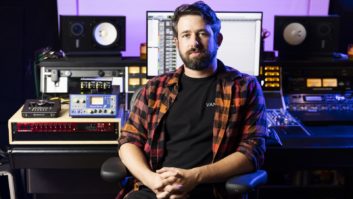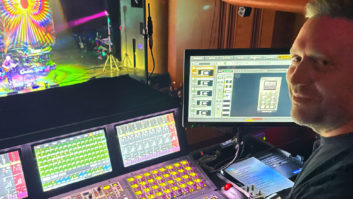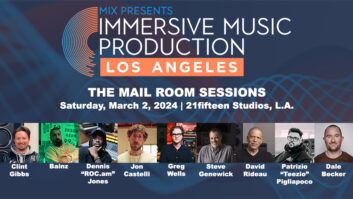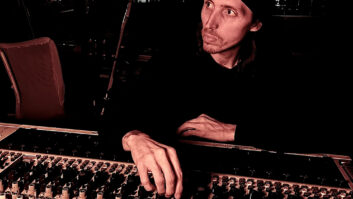When the tribute album trend hits its stride on the heels of Hal Wilner’s eclectic, breakthrough Stay Awake:Various Interpretations of Music From Vintage Disney Films, I thought to myself, “How I’d love to put together a Nick Lowe tribute.” I used to fantasize about my track/artist list the way some people think about how they’d spend their lottery winnings. It turns out a real producer, Randy Labbe, who has worked on numerous Telarc releases, had the same brainstorm.
“It was an idea that grew out of a record I produced last year, Rollin into Memphis: Songs of John Hiatt,” Labbe explains. “The sales director at Telarc, Adrian Mills, was a big Nick Lowe fan — I mean, since he was 18 years old, working in a record shop in London when ‘So It Goes’ came out. We started talking about Little Village [the short-lived ‘supergroup’ that included Hiatt, Lowe, Ry Cooder, Larry Waronker and Jim Keltner], and I guess a light went on at some point.”
Lowe’s work has spanned many genres and phases, including the power pop of “Cruel To Be Kind,” the rockabilly-influenced Seconds of Pleasure by Rockpile, roots on Party of One, soul on The Impossible Bird and the torch songs of Dig My Mood. Labbe and Mills spent a few weeks enjoying the job of revisiting tracks from throughout Lowe’s career, trying to arrive at a short list of songs to cover. Then Labbe began approaching the artists — a unique grouping of blues, rock and singer/songwriter types, some of whom came up with Lowe.
“I first heard Nick some time after The Rumour had been formed and my career was in full swing,” explains Graham Parker, who sings “The Rose of England” on the album. “[Back then], I thought Nick was a novelty songwriter, actually…Nick produced my first album, Howlin’ Wind, but I didn’t hire him as producer because I admired his work; I hired him because my manager told me he was the man for the job. It took me a long time to realize that Nick could really write some great stuff; it was the album The Rose of England that turned me around, in fact.”
Parker was given a choice between “Rose” and “All Men Are Liars.” “After listening to them both, I plumped for ‘Rose,’” he recalls. “Because I was in the studio at the time that this idea was broached to me, recording my own new album, I cut the Lowe song with the rhythm section I had on hand and recorded in Dreamland Studios in West Hurley, New York.”
Other performers who signed on include Dar Williams, Tom Petty & The Heartbreakers, Sleepy LaBeef, Marshall Crenshaw, Joe Louis Walker and Elvis Costello. Tom Petty’s track is a little-known, previously released version of “Cracking Up,” and Costello’s performance of “Egypt” was recorded in Dublin and delivered complete. For the rest of the songs, Labbe hired a core group of musicians to lay down tracks in The Studio in Portland, Maine.
“It’s hard to make it sound like a ‘record’ when you have a different headliner on each song, but it does give it a little bit more cohesiveness, I think, to keep the band pretty much the same,” Labbe explains. “It’s definitely a multi-genre approach, but the foundation is consistent.”
With G.E. Smith on guitars, T-Bone Wolk on bass, Steve Holley on drums, Labbe and engineer Steve Drown recorded direct-to-disk to Labbe’s Emu/Ensoniq Paris system. Monitors were the facility’s Genelec 1030s.
“We record going through mostly Millennia mic preamps and the Drawmer 1960, which is one of the tools I use a lot,” says Drown, who has worked on 12 album projects with Labbe. “We go straight into the computer, and then monitor straight out of the computer. There’s no crap in the way — just good mic preamps, good microphones, right into an A-to-D converter. The objective is to keep things clean and simple and neat, rather than creating something that is not real, which I would do on rock or pop records.”
The microphones Drown used for the basic tracks were pretty basic, as well: Drum miking was with a Neumann TLM 170 on kick, two Shure SM57s on snare top and bottom, a Neumann KM84 on hi-hat and Sennheiser 421s on tom-toms. Overheads were AKG 451s.
“T-Bone Wolk has an ADL tube direct box that I’ve been using on almost all of his stuff,” Drown says. “He and G.E. both have such great collections of instruments and amps. So, in T-Bone’s case, we went directly through his ADL tube direct box into a Millennia mic preamp.
“On guitar, I used a variety of things. G.E. has such an incredible sound that you can almost use anything. But, mostly, I used a combination of a Coles 4038, SM57 and AKG 414, and in a variety of positions. A guy like G.E. has made a million records, has a million guitars and amps, and if he’s not hearing what he’s imagining, we switch something out.
“There’s the same rhythm section on the majority of these songs, but the songs are different and they have different feels to them,” Drown continues. “Some have acoustic guitar, and some are mostly electric. And, in fact, some of the guitars were recorded direct. On the first tune, [Dar Williams’] ‘All Men Are Liars,’ we went back to the ’80s and recorded direct through a Rockman to get that kind of twangy guitar. He had an old Gretsch for that, and it’s really bright and clean.”
“As a producer, trying to make natural-sounding records, I rely heavily on the core band,” Labbe says. “I’ve worked with G.E. Smith on several projects now and have come to rely on him as much for his skills at on-the-spot arranging as well as his guitar playing. The same can be said of T-Bone and Steve: They’re all world-class players with great ideas. That’s very important to me, because ‘we’ll fix it in the mix’ isn’t part of our vocabulary.”
Labbe took the completed recordings to his own studio, Deluge Entertainment, to mix with engineer Lincoln Clapp. It’s a formula that Labbe has become very comfortable with: recording with Drown and mixing with Clapp, who began his audio career in the ’70s, when he was on staff at New York City’s legendary Mediasound.
Labbe’s studio is also outfitted with the Paris Pro System and various outboard gear. “The Paris probably isn’t fancy enough and doesn’t cost enough, but I think it sounds great,” Labbe says. “I just really like the converters. I think it was probably a defining moment for us to settle on this system.”
Deluge is equipped with ATC Active 20 speakers, and Clapp brings his own Yamaha NS-10 near-fields. “It’s a fairly simple setup,” Clapp says. “We use a lot of the internal effects of the Paris system, different types of reverb, compression, etc., and I used some of my own little doodads — some homemade direct boxes. Randy and I have mixed a lot of traditional blues albums together, and he likes to keep things sounding as though they’re coming from the same performance, so I try to keep the sounds the same.”
The tracks recorded by Drown didn’t need much “help” in the mix, but Clapp did spend a bit of time fitting in the songs that came to the production team complete. “Some of those tunes I ran through analog processing to make them match the other tunes,” Clapp says. “That’s one of the reasons Randy got the Paris system; the analog-to-digital converters will take a track that maybe sounds a little brittle and warm it right up.
“Another example the Paris was good for was the song ‘Television’ [sung by Marshall Crenshaw]. I wanted it to have a beefier sound. The Paris has three different reverbs built into it. One is a plate, one’s a room, and one’s a nonlinear reverb. And I used the nonlinear on the ‘Television’ track. It sounds like a gated reverb. It’s something that is big, but then stops quickly. And I adjusted that within the track to give the snare a little bit of presence within the track.”
“We’re producing for a label with a strong audiophile history, Telarc,” adds Labbe. “They come out of a respected position, first with classical recordings, then jazz and more recently blues. So, we’re just looking for really clean sounds — clean signals, honest performances, without a lot of glitter.”
Labour of Love is an honest album all ’round, made by performers and technicians who truly admire Nick Lowe and his work. “To me, Nick Lowe is a hero of musicians,” says Drown. “As a songwriter, a producer, a bass player, a performer, he’s just done so many things, and everybody likes his work in some way or another. The fact that his name is not a household word is a shame. Maybe this will help.”
NEW SONGS: “THE CONVINCER”
Somebody will need to record another Nick Lowe tribute album at some point, because he’s not done making wonderful albums. His latest, The Convincer (Yeproc Records), is a soulful, jazz-influenced album, on which Lowe’s voice absolutely shines. His songwriting just keeps getting better, but more importantly, in recent years, he’s found new ways to sing and arrange that get him almost painfully close to the feelings he conveys. Though, as usual, Lowe pokes fun at himself even when he’s most sincere — hence, the title. The album was produced by Lowe with his longtime collaborator, producer/engineer Neil Brockbank. Recorded at RAK Studios (London) and The Barge (Twickenham, Middlesex), The Convincer includes the same core musicians who appeared on Lowe’s past two albums: Robert Treherne (drums), Garaint Watkins (organ, piano) and Steve Donnelly (lead guitar). Don’t expect “Cruel To Be Kind,” but expect to be charmed.
— Barbara Schultz






